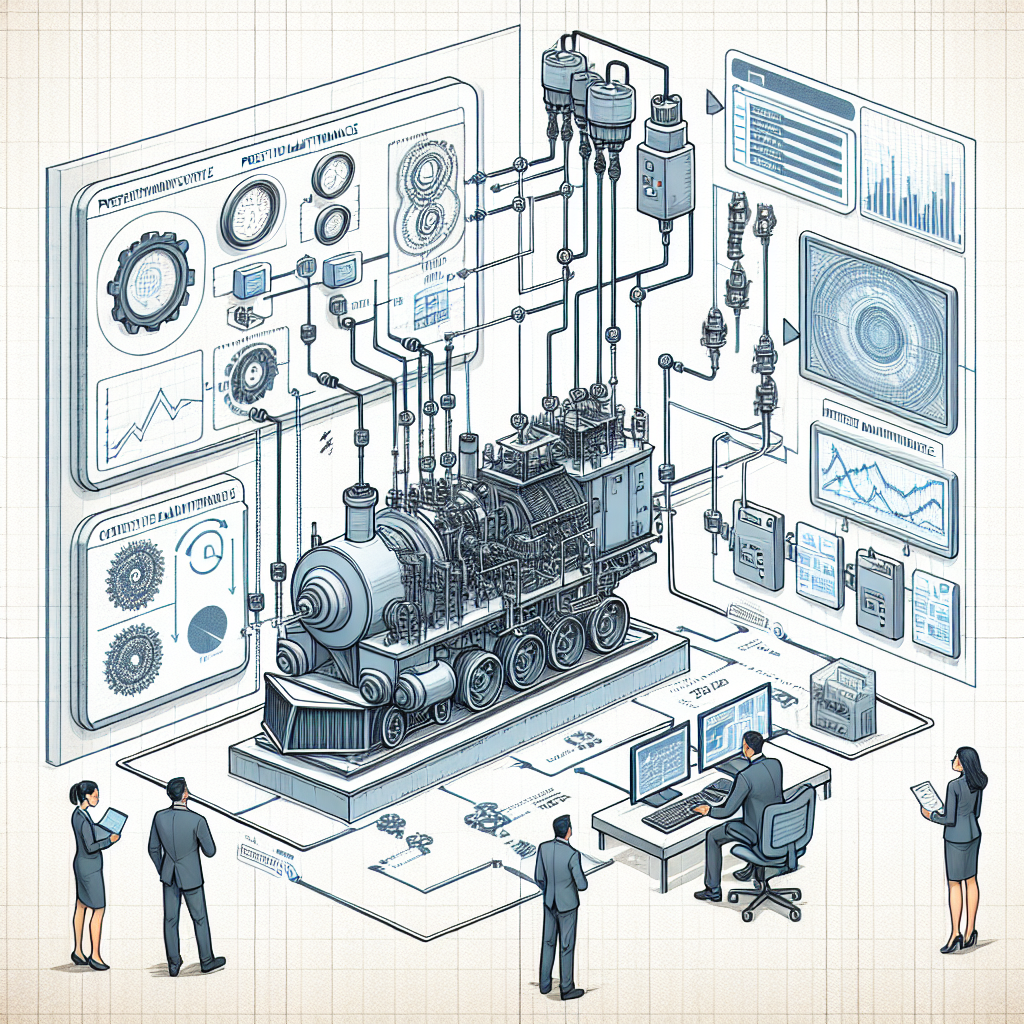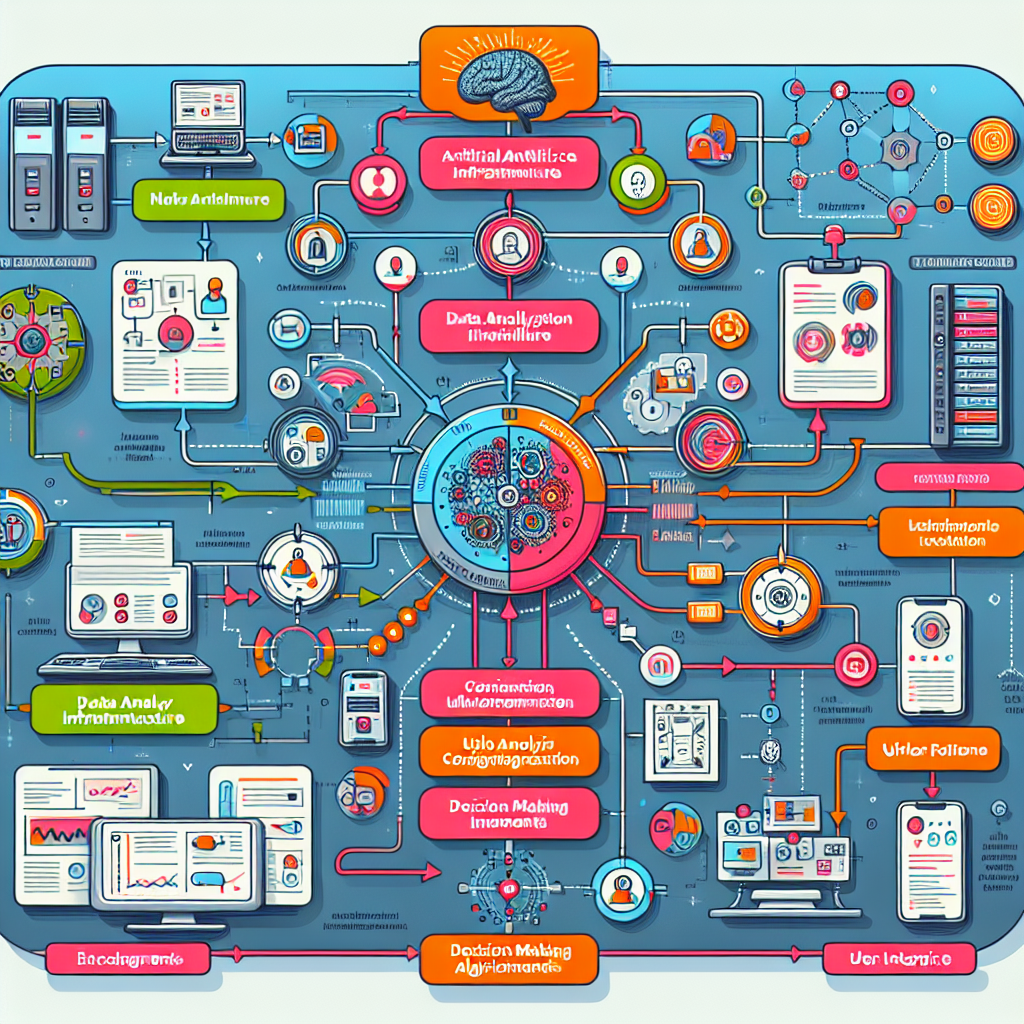
In recent years, telecommunication systems have made significant leaps in their operation and management, calling for innovative, more proactive measures in their maintenance. One such measure is predictive maintenance, which utilizes the power of Artificial Intelligence (AI). Predictive maintenance is a method that leverages machine learning and data analysis to predict potential faults in a system, enabling early intervention and thereby maintaining phone system uptime.

The traditional method of maintaining telecommunications systems is primarily reactive – waiting for a problem to occur before acting. This mode of operation, known as corrective maintenance, often leads to downtimes, which can reduce service quality, disrupt communication and result in substantial losses. On the other hand, predictive maintenance uses advanced technology such as AI and machine learning, to analyze trends and patterns, predict potential system errors, and prompt timely interventions to prevent any disruption in service.
The goal of predictive maintenance is to predict when equipment failure might occur and prevent the occurrence of the failure by performing maintenance. Monitoring for future system failures makes investment in predictive maintenance a prudent step for businesses seeking to optimize costs and ensure seamless operation. Moreover, the widespread adoption of AI in various industries, together with the growing focus on uptime optimization, is expected to drive the growth of predictive maintenance services in telecommunication systems.
With Predictive maintenance, businesses get to benefit from optimized operational efficiency, increased profits and improved customer satisfaction as a result of reduced downtimes. Harnessing the power of AI for predictive maintenance is no longer a lofty ideal, but a critical business strategy for uptime optimization. Moving forward, we can only expect an increased adoption of AI-driven predictive maintenance in telecommunication systems.
The advent of Artificial Intelligence (AI) technology is transforming processes across many industries, with phone systems maintenance being no exception. Predictive Maintenance (PdM) for phone systems, enabled by advanced AI technologies, is the new frontier in achieving optimized uptime. But what role exactly does AI play in predictive maintenance?
AI makes it possible to predict system failures even before they occur by leveraging sophisticated attributions of Machine Learning (ML) Predictive Analytics. These ML models can analyze historical data regarding phone system failures and learn to predict potential issues. With the inclusion of Deep Learning, a subset of ML, the predictive capabilities become even more profound. Deep Learning helps in identifying subtle patterns or abnormalities which may be missed by more traditional analytics methodologies.
The predictive maintenance algorithms, supported by AI, trigger automated maintenance tasks streamlining repair and upgrades effectively, contributing to increased system longevity and reduced service outages. This automated real-time action not only improves the reliability and service quality of the phone system but also helps in decreasing the overall maintenance burden.
Furthermore, AI-driven predictive maintenance utilizes Internet of Things (IoT) technology for continuous monitoring of phone system components. This allows for remote diagnostics and real-time updates regarding system health, further bolstering predictive maintenance efficacy.
Simple put, AI is the engine behind the accurate and timely forecast - as well as the prompt, automated response - fundamental to effective Predictive Maintenance. By minimizing unforeseen downtime through AI-driven PdM, organizations can maintain a reliable phone system, better serve their stakeholders, and even cut costs in the long run.
Predictive maintenance powered by Artificial Intelligence (AI) takes conventional maintenance strategies to a new level by proactively identifying impending issues in phone systems. One key aspect of this forward-thinking approach is its ability to integrate smoothly with existing phone systems to ensure consistent uptime and performance optimization.

Predictive maintenance software effectively utilizes AI algorithms to analyze and leverage data from the existing systems. This technology digests comprehensive data on system performance and past malfunctions to devise predictive models. These models are then used to anticipate potential issues or system failures before they occur, vastly reducing system downtime and improving overall efficiency.
This integration process requires minimal human intervention. By continuously learning from the available data, AI-based predictive maintenance tools can autonomously identify patterns that may indicate a potential problem, triggering preventive measures to rectify the issue. This remarkable benefits the users by ensuring seamless communication channels and allows businesses to focus on more strategic tasks, leaving routine maintenance to the AI resource.
To effectively reap the benefits of AI-driven predictive maintenance, the existing phone system's operational data must be easily accessible and analyzable. Fortunately, many modern phone systems are designed with this requirement in mind, making the integration with predictive maintenance software a straightforward process. For legacy systems, however, several modernization steps may be necessary, which can be discussed with an experienced predictive maintenance service provider.
Ultimately, the seamless integration of AI into phone systems paints a promising future for uptime optimization. It represents an evolution from reactive to proactive maintenance strategies, ensuring phone systems are consistently performing at optimal levels, with minimal interruption and improved cost-efficiency. AI is ushering a new era of predictive maintenance and the telecommunications industry is just beginning to unwind its vast potential.
Integrating AI-powered solutions into current phone system maintenance practices can yield numerous advantages. More than offering a proactive approach, it revolutionizes how businesses tune their network infrastructure to continuously adapt, adjust, and optimize. AI-driven predictive maintenance is becoming increasingly pivotal for businesses seeking to tap into the transformative gains of Machine Learning.
Cost Savings should be one of the most significant drivers for any new operational enhancement. By leveraging cryptographic categorizations, real-time fault detection, and intelligent prognostic health management, AI dives deep in diagnosing potential faults in your communication framework, thereby averting expensive system collapses prior to their occurrence. This futuristic maintenance strategy enhances overall operational efficiency, significantly reduces maintenance-related costs, and importantly, it cuts downtime.
Improved Customer Service is another key upshot of implementing AI-driven maintenance. By anticipating system breakdowns, the subsequent downtime that often follows is significantly reduced, resulting in enhanced customer service quality. Furthermore, AI's real-time insight equips technical teams with the ability to resolve potential disruptions swiftly and maintain optimal service delivery, ultimately leading to boosted customer satisfaction.
A Longer Lifespan for Equipment is an often overlooked but powerful benefit that hails from effective AI-driven maintenance. AI's dot-connecting ability enables it to identify and mitigate stress factors harming your equipment’s overall health, thereby extending the mechanical life of your phone systems significantly. This translates into a sustainable economy by delaying hardware replacement costs.
In conclusion, the benefits of AI-driven predictive maintenance on phone systems go beyond the apparent. It is an investment into the proactive fortification of your communication framework. This brings forth not only monetary savings, but also an uplift in customer satisfaction, and an increase in your equipment lifespan - ultimately leading to a healthier, more productive business environment. Looking to the future, AI predictive maintenance should increasingly be considered as a key ingredient to maintain the vitality and reliability of corporate communication systems.
As the demand for seamless telecommunications increases, AI-driven predictive maintenance has become an indispensable solution for improving phone system reliability and operational efficiency. This has been underscored in several real-world applications. Case studies based on these applications are instrumental in understanding the significant impact of predictive maintenance on phone systems.
The first case belongs to a telecommunications organization in Europe that incorporated AI-driven predictive maintenance into their system. Their implementation of AI-enhanced predictive strategies reported a 30% reduction in maintenance costs and increased system uptime by 20%. This provided an all-round efficient service, proving predictive maintenance's notable contribution to system reliability.

Another compelling example is a multinational company that provides phone services. With the application of AI predictive maintenance, system failures dropped by 25%. This reduced customer complaints significantly and bolstered the company's revenue and customer trust.
Lastly, a small-sized VoIP provider in North America unlocked major efficiency with AI-driven predictive maintenance. By leveraging artificial intelligence-based predictive methodologies, they mitigated routine system breakdowns and increased overall uptime, advancing client satisfaction and retention rates.
In conclusion, AI-driven predictive maintenance for phone systems is instrumental in driving uptime optimization and improving service reliability. These examples provide just a snapshot of the potential it has in enhancing system reliability and operational efficiency. The adoption of such technology not only reduces downtime but also boosts customer satisfaction and trust – thereby enhancing the overall business's growth and success.
Artificial Intelligence (AI) has already created a powerful impact in today's technology-driven world, and the future trends in AI continue to shape various sectors including the telecommunication industry. One of the most prominent applications of AI is in predictive maintenance for phone systems which can significantly boost uptime optimization. It's a fast-growing and innovative field that enterprises must watch.
Predictive maintenance harnesses machine learning algorithms and AI to anticipate failures in a phone system before they actually occur. Looking towards the future, we can expect AI to be much more advanced, with superior capabilities for anticipating system breakdowns. The predictive models would not only signal an upcoming device or system failure but would also identify potential causes and recommend preventive measures.
For example, AI in integrated AI systems would be powered with the capability to analyze vast, complex data sets in real time, processing data from thousands of different sources to make valuable predictions. Back-end phone system maintenance could become automated, saving overhead costs and increasing efficiency. Larger issues that disrupt service could be uncommon, replaced with consistent maintenance that heads off problems at the pass.
Furthermore, AI has a significant role in transforming Internet of Things (IoT) for predictive maintenance. IoT is set to completely overhaul the way predictive maintenance is performed on phone systems. By using AI-driven IoT devices, data from every individual device in a system can be collected, analyzed, and interpreted for indicators of faults, potential failures, or system health, enhancing precision in prediction and enabling more efficient maintenance strategies.
The amalgamation of AI with Predictive Analyses and Augmented Reality (AR) might become the next big thing. Technicians armed with AR devices could potentially see a visual overlay of a phone systems' health stats and predicted points of failure. This could expedite repair and maintenance, reducing downtime and costs.
In conclusion, the convergence of AI and predictive maintenance for phone systems is shaping up to be a revolutionary trend that could redefine industry standards for optimal uptime.
Start your free trial for My AI Front Desk today, it takes minutes to setup!








